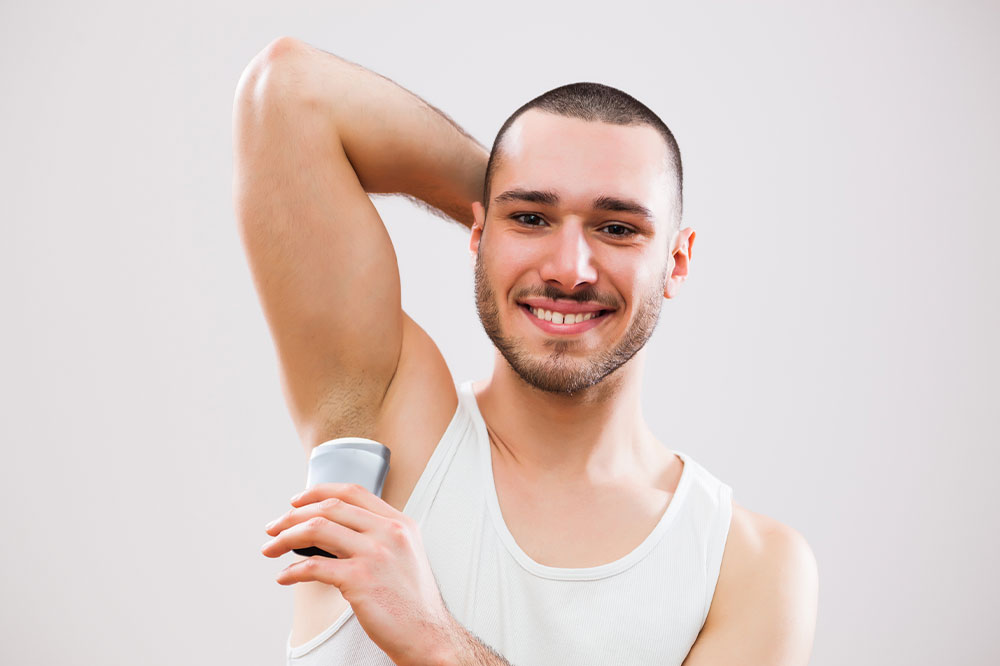
Deodorants and antiperspirants – Types, benefits, and more
Usually, most people use deodorant and antiperspirant interchangeably. However, they are not the same. The purpose of a deodorant is to eliminate odors or mask them. Antiperspirants, on the other hand, reduce perspiration or sweat on the skin. They are found in powder, roll-on, towel, spray, and creams. Hence, antiperspirants and deodorants work differently for the same purpose – avoiding the odor of sweat. Keep reading the article to know more about them.
Types of deodorants
As different deodorants achieve different results, knowing what works best before the purchase and the different types of deodorants in the market are essential.
Spray on or aerosol
These deodorants usually come in aerosol cans and are available in spritz bottles. Unlike the other types of deodorants, the applicator does not come into contact with the skin. Furthermore, sprays or aerosols do not leave white-colored residue on the skin when applied. So, they work well without staining the clothes.
Roll-on
Packaged bottles containing scented liquid and a plastic rollerball applicator, most roll-ons take longer to dry. Furthermore, one may feel wet and sticky after application. However, these deodorants do not leave any white residue on the skin.
Some other types of deodorants include crystals ( good for sensitive skin), gel, solids, and wipes. One can choose these products according to their needs and preferences.
Benefits of deodorants and antiperspirants
Deodorants and antiperspirants have two significant benefits. These are:
Moisture reduction
Sweat is a cooling mechanism of the body that helps it shed excess heat. However, releasing sweat also has disadvantages, such as soaking through clothing, staining, and odor. Antiperspirants benefit users by reducing the moisture from strenuous activities and preventing the release of sweat from the pores.
Odor reduction
Usually, sweat does not have a strong odor. However, the bacteria on the skin that break down sweat may produce an odor. Furthermore, the damp warmth of the armpits is the perfect environment for bacteria growth. Deodorants not only mask the odor but also rid the area of bacteria.
Deodorant vs. antiperspirant – the main differences
Deodorants
Although people apply deodorant and antiperspirant on the same body parts, such as underarms, deodorants only prevent odor or mask its presence. In most cases, they do not have any active ingredients and do not prevent sweating. When applied to a specific body part, deodorants may make the skin acidic, making it less attractive for bacteria growth.
Antiperspirants
The primary purpose of antiperspirants is to prevent sweat in the applied areas. Furthermore, it also contains aluminum as one of the active ingredients. These compounds temporarily block sweat pores and reduce the amount of perspiration that reaches the skin, reducing the odor of body sweat.
Risks of using deodorants and antiperspirants
Skin reactions
In most cases, products applied to the skin can lead to irritation and even contact dermatitis. Furthermore, the risk may increase if one applies such products to thinner areas of the skin, such as underarms.
Parabens
Although many deodorant products do not contain parabens, the ones containing such ingredients can enter the body through the skin; some people believe that these groups of chemicals can lead to cancer. However, FDA has not found sufficient scientific evidence suggesting the risk.
Best deodorants and antiperspirants for men
- Tom and Maine’s Wide Stick Deodorant – Known for its natural fragrance
- Gillette Clinical Soft Sold Antiperspirant Deodorant – Best in terms of extra strength formula
- Native Deodorant – The best choice for long-lasting odor protection
Best deodorants and antiperspirants for women
Dove Invisible Dry Spray Antiperspirant
An antiperspirant spray that’s not only affordable but also stain-free. Moreover, it contains moisturizers for extra soft and smooth skin.
Pacifica Deodorant Wipes
An extremely travel-friendly product that is aluminum free and can be used all over the body.
Final thoughts
In addition to using the products mentioned above, one can also try DIY deodorants and antiperspirants with the help of essential oils like lavender, sandalwood, or bergamot. These natural deodorants do not plug the pores but may contain aluminum as one of the ingredients.




